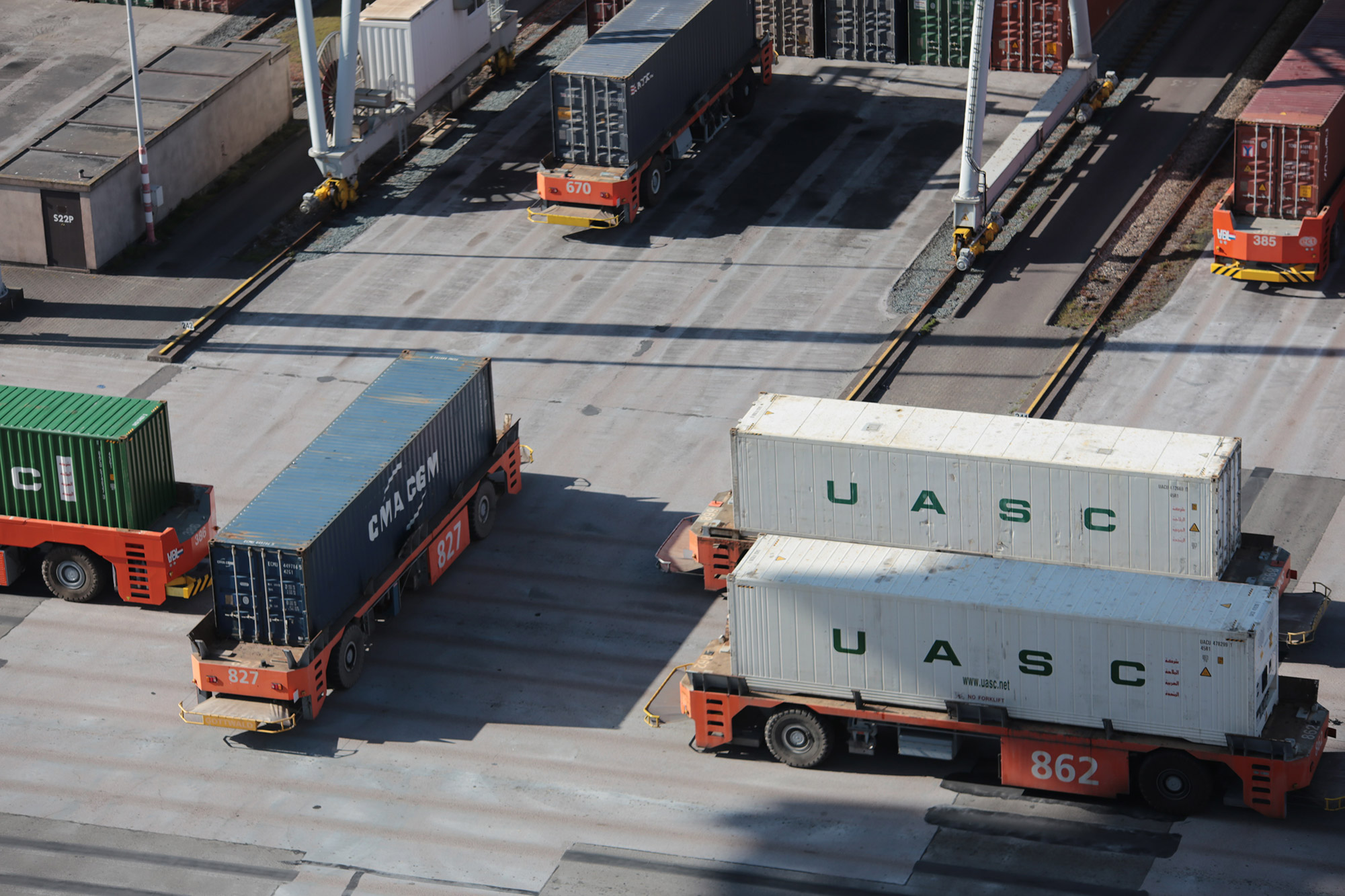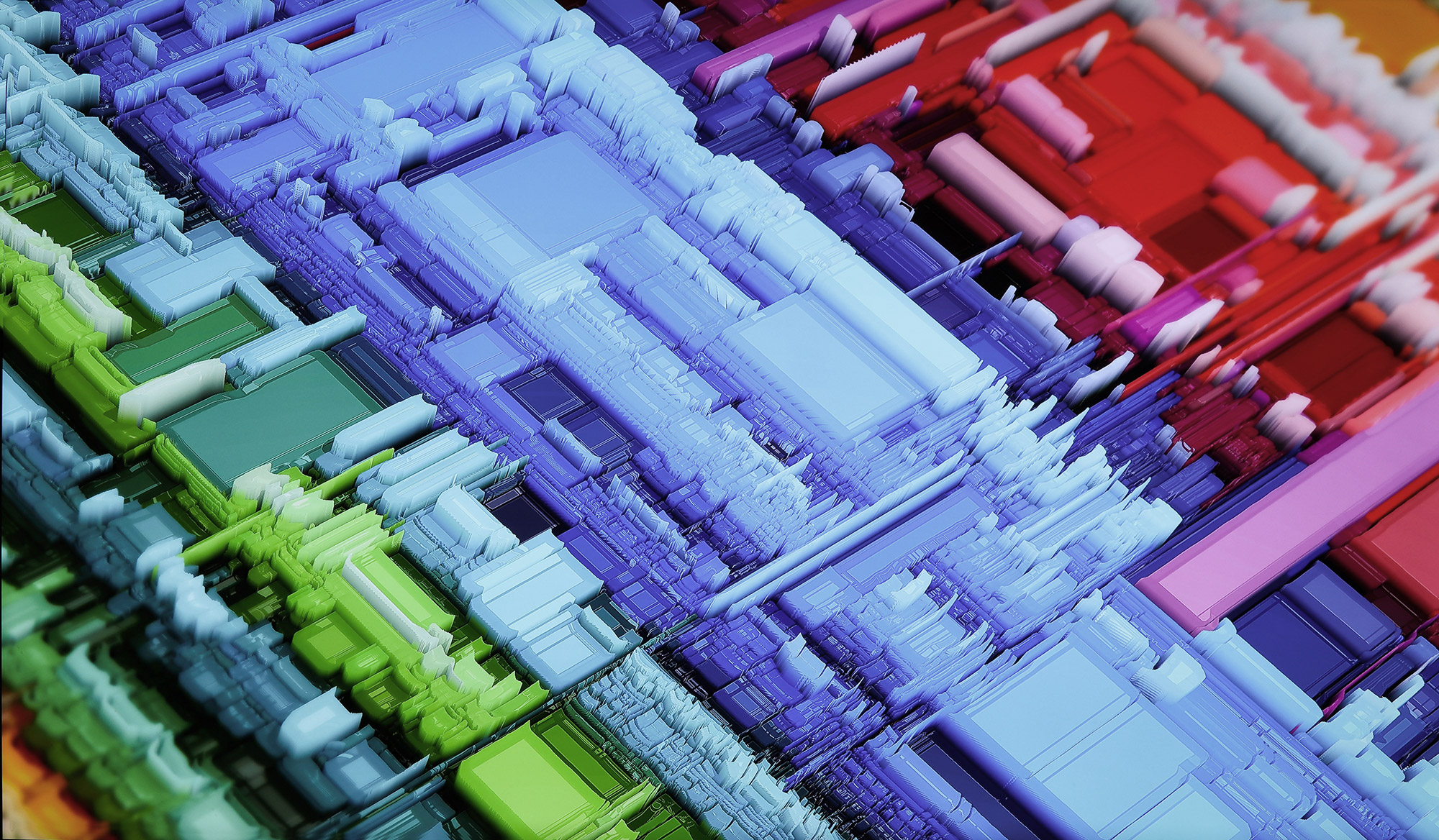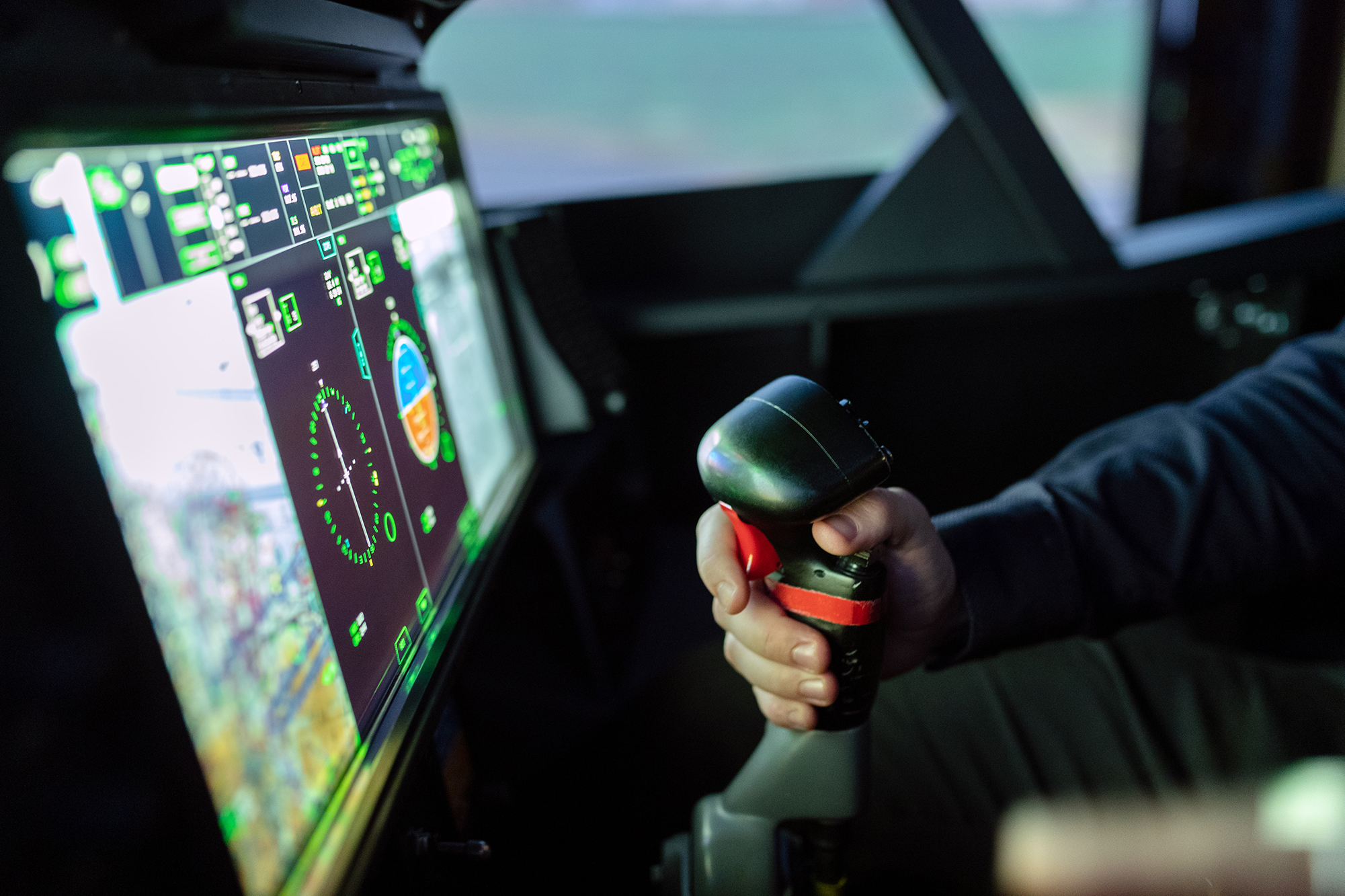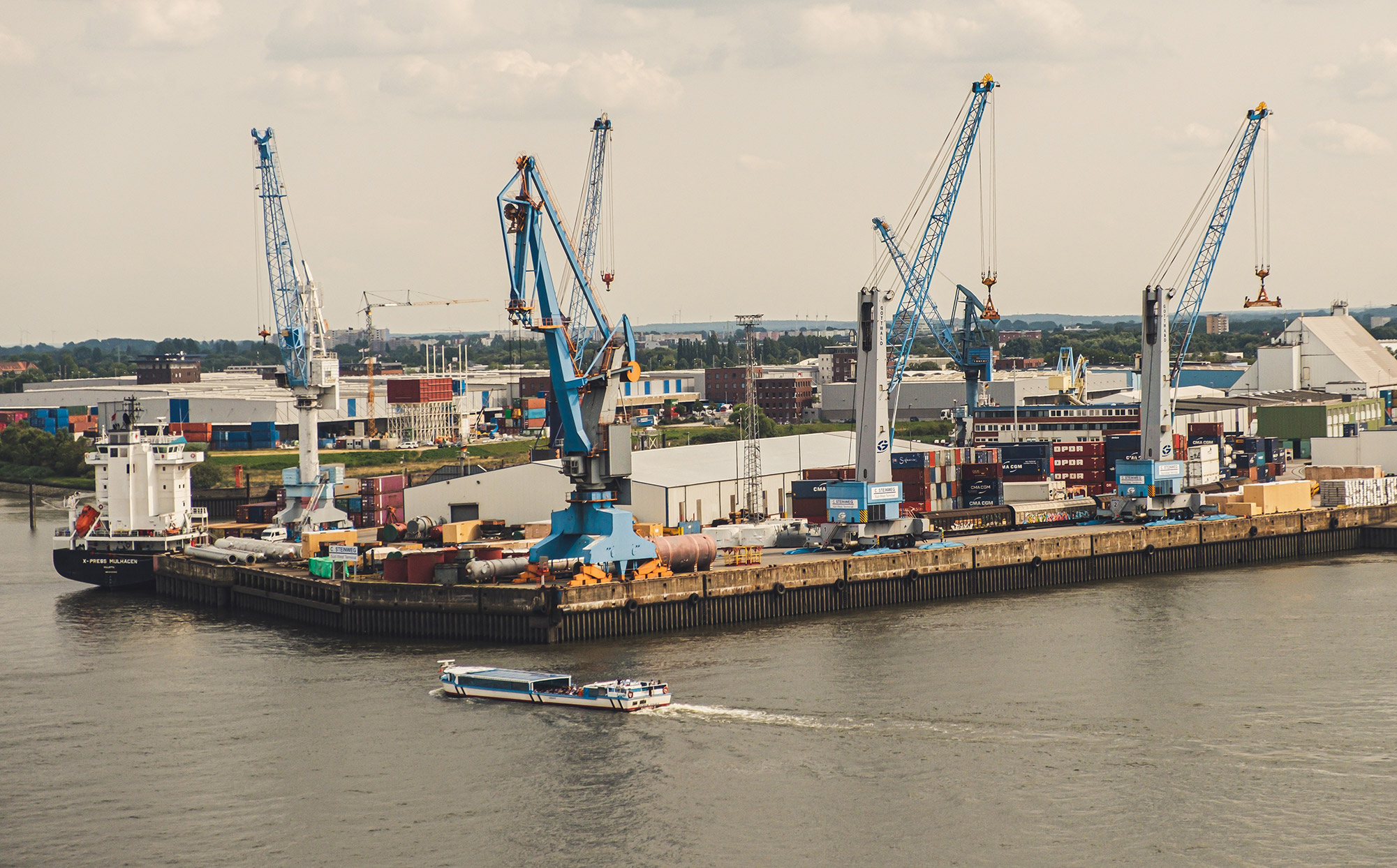
How can collaborative efforts in an industrial area improve resource wisdom?

Freight cooperation solutions for reducing the environmental impact of logistics
freight cooperation, cooperation, fill rate, freight logistics, driving arrangements, ecosystem, optimisation, rationalisation
Operators located in an industrial area can reduce their environmental impact by merging and centralising their freight logistics solutions. This also brings about operational benefits as higher volumes are an advantage in tendering processes, a comprehensive solution means a lighter workload and a joint solution for the industrial area is a more efficient operating model.
- Economy: freight cooperation needs to support climate goals but it also needs to be profitable.
- Commitment: companies need to be committed to their freight cooperation solution, which represents a collaborative economy used for the purposes of purchases.
- Needs: there are synergy benefits but also different needs, and these have to be incorporated into a functioning system.
This solution is right for you if
- you are interested in ways to reduce emissions from your company’s freight logistics;
- your company is located in an area where there are many other companies with similar freight logistics requirements;
- you represent a company focused on freight transport and logistics and want to offer carbon reduction solutions to your customers.
BASIC FACTS
- A freight cooperation system is suitable for companies that are geographically close to each other and have similar needs in terms of freight transport.
- It can be implemented in industrial areas that are in the planning, construction, development or active phase of their life cycle.
- The concept of freight cooperation has been implemented within the framework of futures research. Its practical applications require industrial area- and partner-specific assessment and implementation.
- The concept is implemented by:
- University of Turku, Finland Futures Research Centre (FFRC), Essi Silvonen
- The HNRY project’s transport and logistics solutions forums
- Practical applications have been evaluated in cooperation with Post Nord Oy
Freight transport cooperation challenges the mainstream operating model
In terms of palletised and parcelled goods and parcel traffic, outbound goods are most commonly picked up by transport companies and delivered to the nearest terminal every day. They are then transported to the terminal closest to the destination in the evening and at night, then distributed to their recipients.
Line haul loads tend to have a high fill rate, so they are quite highly optimised in terms of environmental impact and pricing. The collection and distribution of cargo generates more emissions.
There are two ways to enhance carbon neutrality and resource wisdom: 1) by reducing emissions from the fleet; and 2) by optimising operations, which is done by improving the fleet’s utilisation rate and reducing the total mileage. The concept of freight cooperation in an industrial area was developed to challenge the model generally used for transporting goods, in which each company independently invites tenders for its freight transport solutions. The challenge starts by connecting buyers to optimise operations, increase utilisation rates and reduce mileage.
Outbound operations are easy to optimise, but the model needs to be assessed at the system level
The idea for outbound freight is that companies located in an industrial area negotiate a centralised agreement with one transport company, which picks up the goods from all companies in the area in a way that achieves the optimal fill rate. This reduces heavy traffic in the area and has a direct impact on reducing emissions. Companies in the area can also explore the advantages of having a central logistics point/terminal and its suitability for their operations. This allows outbound and inbound freight traffic to be directed to a single destination in the area, and it also reduces lorry traffic. This “first mile” idea is relatively easy to implement, but the situation requires a more comprehensive assessment, both at the industrial area level as well as the district level, so that optimising the operations in one area or of one transport company does not have negative impacts at the system level.
The more challenging aspects of freight cooperation require solutions for their practical implementation
The concept is more complex for incoming freight as various transport companies carry out a large number of deliveries. Transport companies try to combine deliveries but it is difficult in practice due to loading orders, service requirements and schedules. Optimising the system for the transport of outbound and inbound freight may, however, have a significant impact on the mileage, but it requires the development of cooperation between transport companies and service requirements, for example.
Cooperation between transport companies would make it possible for one company to distribute incoming freight to an industrial area if the company selected also picked up the freight from the terminals of the other transport companies. Competition legislation on what information can be shared may also make it more difficult for transport companies to promote this idea. One possible solution would be a separate operator responsible for picking up and distributing goods in the industrial area or a company that specialises in providing climate-friendly transport services.
Freight cooperation solutions have a significant impact on the emissions and attractiveness of an industrial area
The aim of the freight cooperation concept is to save energy/fuel, carry out freight transport operations with the lowest possible mileage and reduce the number of heavy vehicles passing through an industrial area, which makes the area more attractive and safer while reducing noise.
The effectiveness of the concept can be measured by the daily fill rate and mileage of delivery vehicles. It can also be determined how much of the freight that is distributed in fuel-powered vehicles could be transported in electric or human-powered vehicles. The cooperation also allows smaller companies to benefit from larger volumes, giving them a better bargaining position in negotiations with transport companies.
Freight cooperation exploits synergies, or the needs shared by companies, and it is applied to the principles of sharing so that the resource to be shared and optimised is the freight transport capacity; the aim is to maximise the fill load of individual transport vehicles and, consequently, reduce the climate and cost impacts of an individual delivery.
TAKE-HOME MESSAGES
- Trade fair logistics is a good example of a practical application based on this idea: one partner is typically selected to provide all services in an area.
- The development of an operating model based on the idea of freight cooperation can also work in logistics operations in cities and construction sites when the aim is to reduce heavy traffic in urban areas.
- The service promise to the customer is a central theme of the freight transport concept. It will also be necessary to resolve transport companies’ liability issues in the joint procurement model.
- In addition to the industrial area-specific analysis, the situation needs to be assessed locally so the efforts of one industrial area or transport company to optimise its operations does not result in a poorer fill rate or more mileage elsewhere.
Sources:
HNRY – Traffic and logistics solution forum 14 Novermber 2019, expert presentations, materials and workshop materials
Piloting / assessing the suitability of logistical solutions from the viewpoint of a producer, executed by PostNord Kimmo Hyttinen 18 December 2020 and Sonja Heikkilä 14 January 2021
More information: University of Turku, Finland Futures Research Centre, Essi Silvonen, esersi@utu.fi
” We and other transport companies need to gain a genuine understanding and interact with our customers in the development of innovative and sustainable solutions – the industry will turn upside down in the coming years.”
– Kimmo Hyttinen, PostNord 14.11.2019

What will the virtual industrial area of the future look like?

A virtual industrial area as a platform for sustainable business
platform, platform economy, cooperation, business model, sharing, information system
A virtual industrial area is a modular service platform built in conjunction with an actual industrial area to improve communications between operators and to create opportunities for companies in the area to work together to promote their businesses, carbon neutrality and resource wisdom.
- Willingness and creativity: for a virtual industrial area to be viable, companies in the area must be willing and have the creativity to build an understanding of what the shared virtual industrial area could look like.
- The role of cities: cities can play key roles in the building of virtual industrial areas, and the concept may well contribute to achieving their carbon neutrality goals.
- Different levels: a virtual industrial area can have a number of levels and operating models that can be developed module by module as required.
This solution is right for you if
- you are interested in developing creative solutions of the future for industrial areas;
- you want to develop shared functionalities, sharing services, resource management, better communications or business operations in your industrial area;
- you want to explore new approaches to business environments.
BASIC FACTS
- This concept has been implemented within the framework of futures research. Practical applications require area- and partner-specific assessment and implementation.
- Some virtual industrial area solutions have already been put into practice. Some themes are studied and assessed as opportunities.
- The concept is implemented by:
- University of Turku, Finland Futures Research Centre (FFRC), Essi Silvonen
- VTT Technical Research Centre of Finland, Satu Pasanen and Maria Antikainen
- Specialists and participants in the solutions forums in the HNRY project
- The concept has been piloted with Mika Härkönen and Taneli Fabritius of VTT Bioruukki
Shareable resources and matching needs to create resource-wise solutions
The resource wisdom of a virtual industrial area is based on sharing resources and achieving the highest possible capacity utilisation rate. This will result in a reduced need for resources, a lower environmental load, streamlined operations and improved profitability. A virtual industrial area is a platform that connects nearby companies by providing them with a variety of services and taking responsibility for fulfilling their shared obligations in a transparent manner. It also gives operators in the area bargaining power when negotiating the price of services.
A virtual industrial area can offer:
- solutions for maintaining, servicing and maintaining facilities;
- services related to sharing and joint use;
- solutions for energy harvesting and energy use at the industrial area level;
- solutions for warehouse and transport logistics;
- solutions for materials and side flow management;
- other services;
- solutions to promote staff wellbeing;
- business opportunities for companies in the area, for companies that provide services to them and for the platform operator;
- a platform for product and service development;
- virtual visitor services;
- better connections and communications in the area;
- data collection and processing, means to measure environmental impacts;
- zoning of a specific area.
What is required for the creation of a virtual industrial area?
A virtual industrial area needs a body that is responsible for its construction, implementation and operations. In addition to reducing the environmental burden, the area must also be economically viable. The platform needs a technical implementation model that makes it possible to add, remove and modify functions as the area develops and requirements change.
It is hardly worth building a virtual business platform on the basis of companies’ current needs, but it is necessary to assess their future needs as well as possible changes in their business. Changes to a company’s role on the platform and advances in operating models must be taken into account in the platform’s architecture to ensure that the platform’s operating principles do not limit but support and enable companies’ development.
Virtual industrial areas offer a great variety of trajectories and opportunities. It is unlikely that there are many areas that would immediately try to cover a broad range of functionalities, but it is more likely that an area will use the platform to address certain key challenges or objectives shared by the companies, and that the range of functionalities will expand over the platform’s life cycle.
Case: VTT Bioruukki’s virtual industrial area – an active research, collaboration and business platform
VTT Bioruukki, located in Espoo, is VTT’s piloting centre for bio-based products and circular economy solutions. It is part of Espoo Cleantech Garden, which will undergo a large-scale extension project in the coming years to bring together operators in the fields of science, education and research. Key players in the development of the area are the City of Espoo, Omnia, the Joint Authority of Education in the Espoo Region, and NCC. The aim is to ensure that the area is built into a diverse environment that creates a framework for comfortable housing as well as for successful business operations. The area is estimated to be completed in the 2030s, housing up to 9,000–12,000 people, while the number of new jobs is expected to be about 2,000.
Various levels of cooperation in the virtual industrial area
Education – VTT works with educational institutions on education and projects. The virtual industrial area can be used to reach and use both operators’ networks, to share equipment and expertise and to form consortiums for joint projects.
Piloting – the virtual industrial area can serve as a practical piloting platform and a channel for sharing practical solutions with platform operators and end customers.
Technology commercialisation – the virtual industrial area can help to find early-stage financing as well as international and domestic talent. Professional commercialisation experts can also operate on the platform. It can form a virtual idea incubator and commercialisation platform and provide both leverage and collaboration from larger companies that operate on the platform.
Visitor services – the virtual industrial area can be used for virtual visits as well as virtual presentations for visitors to the actual premises, AR presentations, better accessibility and access to the most interesting details in the place without disrupting piloting operations or compromising trade secrets.
Other services – catering, accommodation, culture, sports, guidance, translation, other professional services.
Resource sharing platform – VTT has piloted an industrial sharing platform in an in-house project, based on the idea of providing companies with a platform to share and find different equipment, machinery and human resources. When companies need something, the smart system can find it in the local area; in this case, in the virtual industrial area.
Environmental and infrastructure services – there is a wide range of functionalities in the actual industrial area, and, by working together closely, operators can have sufficient purchasing volume to be able to negotiate good deals on centralised services.
Local residents – the industrial area combined with areas for housing and businesses and as part of a public transport hub can serve as a research platform for a wide range of services, technologies and products. People who live nearby may also need to be informed of various events or malfunctions that can have an impact on the surrounding areas.
TAKE-HOME MESSAGES
- The resource wisdom of the virtual industrial area is based on sharing resources and achieving the highest possible capacity utilisation rate, which means that the overall need for resources as well as the environmental load are reduced while efficiency and profitability improve.
- The concept of a virtual industrial area is modular, which means that such an area can have different layers or functional entities according to the practical needs of the companies located in the area.
- As the virtual industrial area is still at the design stage, it would be useful to start exploring it in such a manner that the principles can be studied and developed in practice. The companies and, possibly, research institutes in the area would also need to be part of these collaborative efforts.
- There is a special precondition for the implementation of a virtual business platform: it needs to generate added value for those involved as well as profitable business for the companies that create and maintain the platforms.
Lähteet:
HNRY- Liikenteen ja logistiikan ratkaisufoorumi 14.11.2019 asiantuntijaesitykset, materiaalit ja työpajamateriaalit
Virtuaalisen yritysalueen ratkaisufoorumi 24.11.2020, esitykset, materiaalit, keskustelu.
VTT Bioruukki pilotointi 25.2.2021, mukana VTTn puolesta olivat Mika Härkönen, Taneli Fabritius, Maria Antikainen ja Satu Pasanen
Kommentointi 5G ratkaisufoorumien osallistujat 8.-16.3.2021
“The virtual industrial area is a promising concept that offers new approaches to how to collaborate in industrial areas. We would like to carry out practical experiments in the next phase to see how a virtual industrial area works and what future opportunities it could bring to VTT Bioruukki and Cleantech Garden.”
Taneli Fabritius, VTT, 23.3.2021

How can a company reduce its environmental footprint through simulator training?

Simulator training to encourage resource-wise use of machinery
resource wisdom, education, learning, virtual environment, simulation, operating methods, competence
The size of a company’s environmental footprint depends on its operating models and work methods. This concept examines the various ways in which simulation environments enable new types of training for using machinery, developing techniques and ways to minimise environmental impacts.
- Minimise: learn resource-wise techniques and minimise the energy consumption of your machines.
- Certify: train new staff and verify your staff’s skills.
- Take action: plan to ensure resource-wise operations.
This solution is right for you if
- your company uses machinery or produces logistics solutions;
- you are interested in simulation environments and their use for learning purposes;
- your job involves planning training activities or you are interested in improving work methods.
BASIC FACTS
- Simulation training is suitable for all companies that use machinery and develop logistics solutions
- Simulation training in a virtual environment creates resource-wise and environmentally sustainable solutions to meet companies’ training and development requirements
- Simulation-based training solutions are already available and are expected to evolve in the coming years
- The concept is implemented by:
- University of Turku, Finland Futures Research Centre (FFRC), Essi Silvonen
- The HNRY project’s transport and logistics solutions forums
- The practical applications have been evaluated in cooperation with ADE Oy
New resource-wise ways to boost emissions reductions
It is essential to find work methods that can be changed to reduce emissions and act in a more resource-wise manner. Reductions made by changing the activities of an individual employee may be small, but the cascade effects resulting from a systematic change become significant in the context of industrial areas.
The principles of carbon neutrality and resource wisdom go hand in hand with health and safety. The principles can be incorporated into professional qualifications and, consequently, they become part of the required techniques. Employees also learn to see and develop their activities in terms of environmental criteria.
The purpose of this concept is to reduce the energy used by machinery; this is achieved by minimising energy loss in operations, streamlining practices, shortening transitions as well as optimising loads and the use of storage capacity. These operational efficiency goals are common and shared by companies. The concept examines how training activities using simulations in virtual environments can help to achieve these goals.
Resource-wise learning will take place in virtual environments
Virtual environments have evolved over the years and are expected to continue to do so. They are used more commonly, and the number of applications designed for educational purposes has also increased. Most training courses are held at educational institutions, but some are also organised in industrial areas. Competence assessment and training play an important role when it comes to recruiting and placing new staff as well as in maintaining and developing current staff’s skills.
Training in a simulation environment has a much lighter impact on the environment than training in a real environment. It allows for the assessment of skills and practising and refining of new skills as required without causing a significant environmental burden.
Methods of using machinery can be improved in virtual simulation training
There are already virtual training solutions that focus on topics such as transporting machines, their safe use and deployment. These solutions are also connected to an industrial area’s carbon neutrality and resource wisdom, which is why it is interesting to see how simulation training can support emissions reduction and resource-wise techniques. The focus is primarily on machines and how they are used in industrial areas, but similar principles also apply to other activities in these areas. Resource-wise work methods can be developed through measures such as training courses on the environmental footprint, skills assessments, training and certification of new employees’ skills, further training and maintaining professional skills, minimising machines’ fuel/energy consumption and planning and optimising work and material flows in the industrial area.
How is simulation training organised in practical terms?
We use the virtual training centre developed by ADE Oy as an example. It can be located either on a company’s premises, in an industrial area or on the premises of a local vocational training centre or other service provider. The virtual training centre is a modular package that consists of the hardware, software, virtual headset and special aids required in the particular course. It is in constant contact with a control room, which provides technical support as well as assessment and approval of skills certification.
The virtual environment offers a variety of exercises from among which attendees choose the ones they need. There is also a test environment in which performances can be evaluated. The virtual training centre is a service with a monthly fee, which varies from a few hundred euros upwards, depending on the number of training modules. Virtual environments and simulation-based training courses are already available on various cranes, vehicles, fire safety, logistics operational safety, operations on construction sites and customer service situations.
See a more detailed presentation of the virtual training centre:
TAKE-HOME MESSAGES
- Virtual environments provide easy and cost-effective ways to organise training. The number of available courses is increasing and the scope of their content is expanding.
- The virtual training centre provides a resource-wise way to organise inductions for new staff, offer further training for current staff and to maintain professional skills.
- Virtual solutions and environments are not only suitable for training individuals but they also make it possible to provide larger virtual learning packages, in which a model of an industrial area or parts of it can be recreated in a virtual environment. This can be used to plan new work methods and assess the best way to implement changes and how they affect the operations as a whole.
- Virtual environments can be used to implement and simulate the progress of a construction site and the environmental footprint during construction, and they can also be used as tools for planning construction projects so that they are as resource-wise as possible.
“Training in virtual environments is a means for effectively practising sustainable work methods, and their future potential is limitless. We already have more than 40 simulators, which can be deployed quickly”
– Pasi Porramo, ADE Oy, 22.3.2021

Is carbon neutrality and resource wisdom in a gated industrial area too narrow a perspective?
A resource-wise and carbon-neutral maritime industry network
reduce, reuse, recycle
The project developed an optimal operating model for flows of materials, resources and information in the Blue Industry Park and Turku Shipyard. The model can be used to achieve resource wisdom and carbon neutrality throughout the supply chain.
- 20–30% increase in value-adding operations.
- 3–7% reduction in material loss.
- 20% better production turnaround time through supply chain transparency and management.
- 5% lower material costs through centralised procurement.
This solution is right for you if
- you operate in the supply chain of Turku Shipyard;
- you operate in a manufacturing industry supply chain;
- you want to streamline your supply chain operations.
BASIC FACTS
- Location: Perno district, Turku. Next to Turku Shipyard.
- Industrial area life cycle: planning phase
- Organiser: Blue Industry Park Oy.
- Time span: 5–10 years from 2021 onwards.
- 600 companies in the supplier network.
- The maritime industry network in southwestern Finland employs 11,000 people.
- The turnover of the maritime industry network was EUR 3.3 billion in 2019.
The aim is to increase the efficiency of the maritime industry network
The concept identified how the operations of the maritime industry network could be streamlined, and an operating model was created for the planning and implementation of these improvements. The aim was to optimise the material, resource and information flows between the Blue Industry Park (BIP) and Turku Shipyard. The project assessed what kind of operating methods the companies in the maritime industry network should use in order to make the network’s operations as resource-wise and carbon-neutral as possible. Finally, it was determined what kind of control system would support resource-wise and carbon-neutral operations.
The logistics centre offers the best support to resource-wise and carbon-neutral operations
The concept determined which activities should be located in the BIP area in order to make the maritime industry network as efficient as possible and to support resource-wise activities. The key functionalities were production facilities and the logistics centre.
The need for production facilities varies: some operators require a small workshop while others need a larger production facility. The premises to be built must also be adaptable so that they can meet the changing demand. Pre-assembly and modularisation would also reduce the logistical burden in terms of traffic volumes and packaging materials. Traffic volumes are reduced when larger entities are transported and there are fewer deliveries of parts and components in the area.
Recycling reduces material waste
Recycling packaging waste and standardising transport packaging in the area would be very beneficial. If standardised methods were used for recyclable packaging materials, logistics operations would be clearer and the volume of packaging materials in the area would be reduced.
Building a centralised recycling centre in the BIP would serve companies in the area and help ensure that waste materials are recycled. The recycling centre would operate in the area between the BIP and the shipyard, which would be ideal for all parties.
With regard to the location of functionalities, traffic going into the shipyard must also be considered. The logistics centre should be located either beside or in the immediate vicinity of the production facilities in order to avoid any unnecessary traffic.
Information creates trust
Yhteistoiminnan ja resurssiviisauden edistämiseksi tarvitaan mitattua tietoa. Konseptiin liittyen määriteltiin viisi tärkeitä mittaria:
Measured data is required to promote collaboration and resource wisdom. Five important indicators were identified in relation to the concept:
- Security of supply of incoming materials
- DIFOT (Delivered In Full and On Time)
- Security of supply of site-specific material packages
- DIFOT (Delivered In Full and On Time)
- Progress of the site-specific plan
- Timing and accuracy of master production scheduling
- Timing and accuracy of detailed planning
- Implementation of the plan content
- Monitoring deviations
- Work package-specific monitoring
- Delivery line-specific monitoring
- Monitoring of transport volumes
- Monitoring of inbound logistics
- Monitoring of reverse logistics and material loss, surplus/waste
- 3R strategy (Reduce, Reuse, Recycle)
TAKE-HOME MESSAGES
- Material wisdom: centralised materials management can reduce material waste.
- Resource wisdom: minimising the amount of surplus material with more careful planning.
- Information wisdom: the information flow generated by the digital platform enables supply chain management and development.
“Stopping structural waste is the only way to save the planet.”
–Ari Viitanen, HPJ CarinaFour




